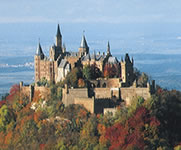The high-quality architecture, the formal language, the layout of the apartments and the urban design aspects of these estates became models for much of 20th century urban development.
The buildings represented a new architectural type which greatly influenced the development of social housing and thus urban architecture, planning and landscaping. The modern estate structures stood in sharp contrast with contemporary tenement blocks, providing a healthier environment and a greater quality of life for the poorer classes.
The design and construction of the estates marked a structural change in housing provision that was only possible in the particular political and social conditions of the period following the First World War. Intended as a counterpart to private-sector building speculation with its tenement blocks they were meant to exemplify a new type of architecture for a new society.




